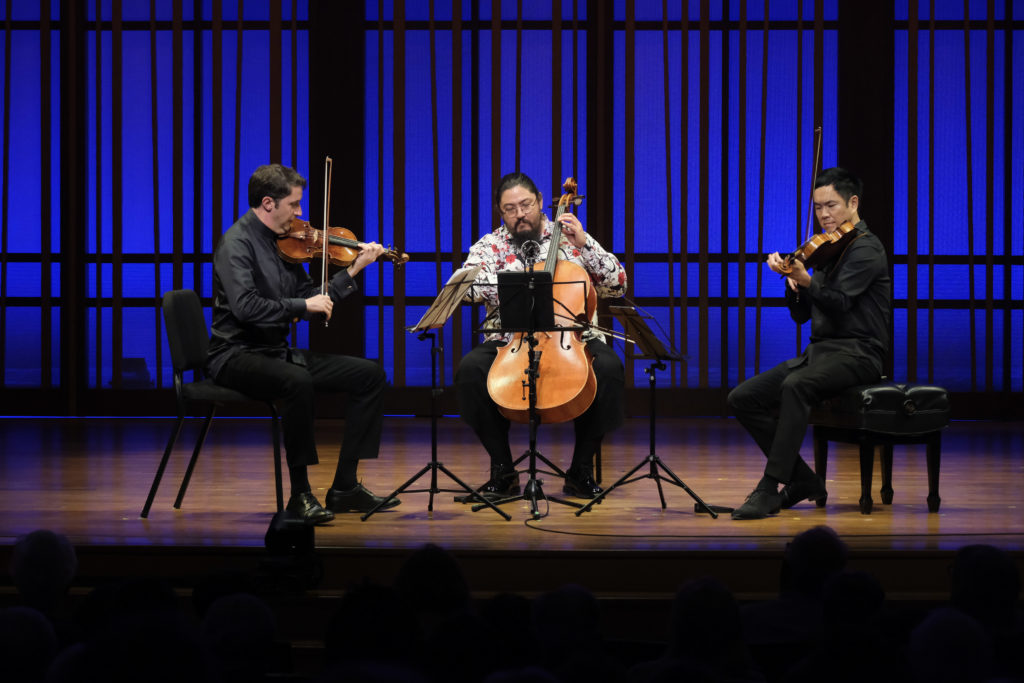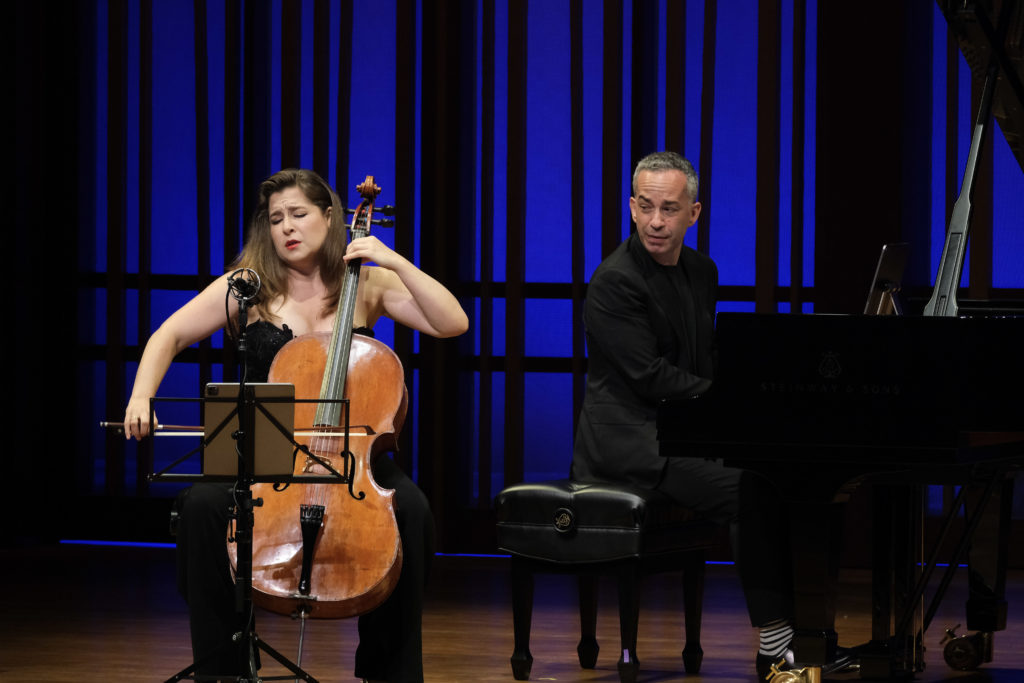String Quartets and Trios Dazzle at Friday’s SummerFest Concert
When I think of music by Finland’s greatest composer Jean Sibelius, his Nordic tone poems, the Violin Concerto, and his seven Symphonies quickly come to mind. Friday’s SummerFest concert opened with his charming but obscure Serenata for Two Violins and Cello, a reminder that he could produce chamber music when he put his mind to it.
Sibelius completed his modest Serenata when he was 22, studying at the Helsinki Music Institute—a conservatory that now bears his name: the Sibelius Academy. Far removed from the brooding ethos of his later Nordic sagas, this Serenata is a jovial bravura etude replete with charming intertwined melodies for the instrument he knew best, the violin. The beautifully matched timbres of violinists Noah Bendix-Balgley and Max Tan produced a silvery halo of sound over Julia Lee’s warm, buoyant cello lines.
Promising Czech composer Gideon Klein was also 22 when he wrote his String Trio, although unlike Sibelius he did not have the luxury of conservatory surroundings. The year was 1944, and like thousands of other Czech Jews, he was incarcerated in the Nazi “model” concentration camp in Terezín, Czechoslovakia.If the String Trio’s carefree—almost jovial—opening movement seems ironic given Klein’s circumstances, the slow middle movement’s variation cycle on a dark, modal Moravian folk tune more clearly parallel’s Klein’s dire situation. The style of the closing movement, a bristling “Molto Vivace” filled with emphatic syncopations, suggests the Neoclassicism that was in vogue throughout Europe between the two World Wars.
Violinist Bendix-Balgley, violist Richard O’Neill, and cellist Paul Wiancko provided an ecstatic account of Klein’s String Trio.
I cannot think of two contemporary musicians I would rather hear than cellist Alisa Weilerstein and pianist Inon Barnatan perform Frederic Chopin’s Sonata in G Minor for Cello and Piano, Op. 65. While their prowess is clearly equal, Barnatan’s Apollonian sangfroid always balances Weilerstein’s Dionysian passion, and for a work that provides unceasing opportunity for virtuosic splendor, this combination is nonpareil.In the rhapsodic opening movement, Weilerstein’s command of the main theme’s effulgent flourishes proved both probing and energetic, and Barnatan’s cascades of descending piano runs were equally bracing. After their exuberant account of the “Scherzo,” Weilerstein’s refined sense of rubato and Barnatan’s sublime touch turned the “Lento” into a deeply consoling meditation. All of the duo’s virtues that propelled the opening movement returned with even greater effect in the Sonata’s vigorous “Finale.”
The Takács Quartet gave a polished and beautifully detailed account of Beethoven’s String Quartet in E Minor, Op. 59, No. 2, the second of the three celebrated Razumovsky Quartets. Among the virtues of the quartet’s interpretation I would include first violinist Edward Dusinberre’s assertive command of main theme of the vibrant “Presto,” cellist András Fejér’s and second violinist Harumi Rhodes’ mesmerizing second movement solos, and violist Richard O’Neill’s warm, ingratiating timbre that suffused the entire quartet. But I thought the ensemble produced a more radiant and engaging character Wednesday evening in the Beach Piano Quintet and the Dvorak String Quartet when Paul Wiancko filled in for ailing András Fejér.
This concert was presented by the La Jolla Music Society on Friday, August 11, 2023, at La Jolla’s Conrad Prebys Performing Arts Center. The festival runs through August 26, 2023, at the same venue.

Ken Herman, a classically trained pianist and organist, has covered music for the San Diego Union, the Los Angeles Times’ San Diego Edition, and for sandiego.com. He has won numerous awards, including first place for Live Performance and Opera Reviews in the 2017, the 2018, and the 2019 Excellence in Journalism Awards competition held by the San Diego Press Club. A Chicago native, he came to San Diego to pursue a graduate degree and stayed.Read more…


